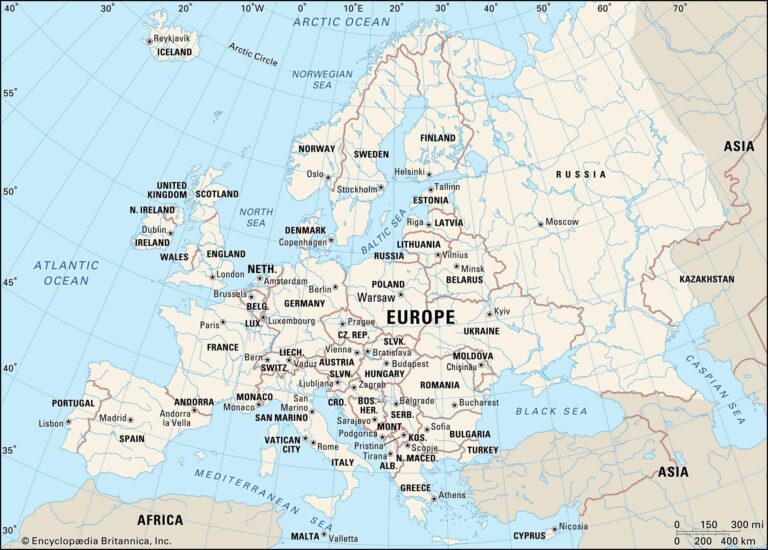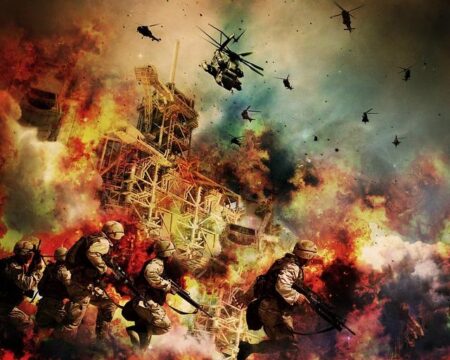Tensions between Europe and Russia have escalated sharply amid the ongoing conflict in Ukraine, raising fears of a broader confrontation. As diplomatic efforts stall and military activities intensify, questions emerge about whether the two powers are edging closer to open conflict. This article examines the latest developments, the stakes for regional and global security, and the implications of a potential escalation between Europe and Russia over Ukraine.
Rising Tensions in Eastern Europe Signal Growing Risk of Conflict
The geopolitical landscape around Ukraine has sharply deteriorated in recent weeks, with multiple indicators pointing to an escalation in hostilities. European capitals and Moscow have exchanged stern warnings as troop buildups along Ukraine’s borders grow increasingly conspicuous. Diplomatic channels appear strained, and the risk of miscalculations on either side is mounting. Analysts warn that the convergence of military posturing and sustained rhetoric could unravel fragile peace efforts, potentially sparking a broader conflict in the region.
Key factors exacerbating tensions include:
- Heightened military exercises involving tens of thousands of troops near disputed territories.
- Disruptions to energy supplies threatening economic stability across Europe.
- Stalled negotiations in international forums tasked with conflict resolution.
- Increased cyber operations and disinformation campaigns targeting civilian populations.
| Aspect | Current Status | Potential Impact |
|---|---|---|
| Troop Deployment | ~150,000 along Ukraine border | High chance of direct confrontation |
| Energy Supplies | Reduced gas transit through pipelines | Economic strain on EU nations |
| Diplomatic Talks | Paused since last month | Limited conflict resolution options |
Analyzing the Geopolitical Stakes for Europe and Russia Over Ukraine
The ongoing tensions surrounding Ukraine have become a focal point in the broader struggle for influence between Europe and Russia. For Europe, the stability of Ukraine represents not just a matter of regional security but a test of the European Union’s ability to uphold democratic values and deter aggression on its borders. The stakes are heightened by Europe’s energy dependence on Russia, which complicates diplomatic responses and economic sanctions. Additionally, NATO’s expansion and military presence near Russian borders are viewed by Moscow as a direct threat to its national security, intensifying the risk of escalation.
Key factors driving the geopolitical contest include:
- Control over critical energy transit routes
- Influence over Eastern European political alignments
- Military posturing and arms deployments
- Cyber and hybrid warfare tactics to destabilize opposition
| Aspect | Europe’s Position | Russia’s Position |
|---|---|---|
| Security | Strengthen alliances, deter aggression | Prevent NATO expansion, maintain buffer zones |
| Energy | Diversify sources, reduce dependence | Leverage supply as geopolitical tool |
| Political Influence | Support Ukraine’s sovereignty and democracy | Preserve sphere of influence in former Soviet states |
Strategies for De-escalation and Diplomatic Engagement in the Region
In the current climate of heightened tensions, diplomatic engagement remains the most viable path to reducing the risk of conflict. Key regional actors have underscored the importance of sustained dialogue, leveraging existing international frameworks such as the Organization for Security and Co-operation in Europe (OSCE) and the Normandy Format. These platforms facilitate direct communication channels between conflicting parties, helping to build trust and clarify intentions amidst growing uncertainty. Additionally, confidence-building measures like mutual troop withdrawals and transparent military exercises have been proposed to ease fears and signal commitment to peaceful solutions.
Complementing diplomatic efforts, a range of practical strategies are being advocated by policy experts and international mediators. These include:
- Humanitarian corridors to alleviate civilian suffering and foster goodwill.
- Establishment of international monitoring missions to ensure accountability and prevent ceasefire violations.
- Economic incentives and targeted sanctions relief as levers to encourage cooperation without compromising security interests.
Table 1 below offers a snapshot of key diplomatic tools currently in play, highlighting their potential impact and challenges in the complex environment.
| Diplomatic Tool | Potential Impact | Challenges |
|---|---|---|
| Ceasefire Agreements | Immediate reduction in violence | Enforcement and verification difficulties |
| Third-Party Mediation | Neutral platform for negotiation | Mutual distrust among parties |
| Sanctions and Incentives | Economic pressure to deter aggression | Risk of escalation and hardship for civilians |
| Multilateral Forums | Broader international buy-in | Slow decision-making process |
Future Outlook
As tensions continue to simmer over Ukraine, the prospects of a direct confrontation between Europe and Russia remain uncertain but increasingly fraught. Diplomatic efforts persist amid a complex web of geopolitical interests, yet the risk of escalation cannot be dismissed. The coming weeks will be critical in determining whether dialogue prevails or if the region edges closer to a conflict with far-reaching consequences. Observers worldwide will be watching closely as this volatile situation unfolds.




